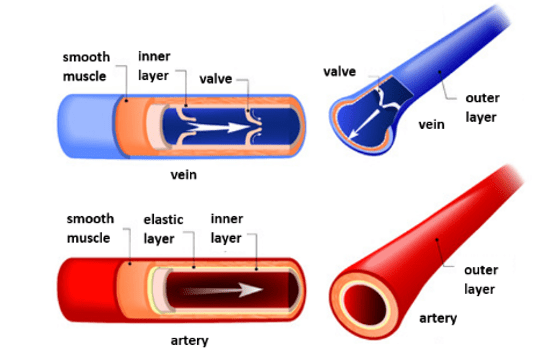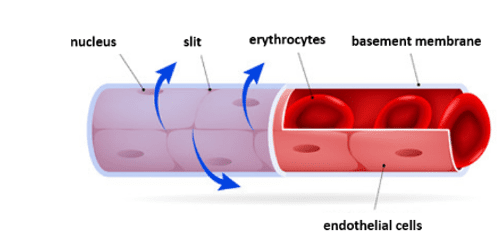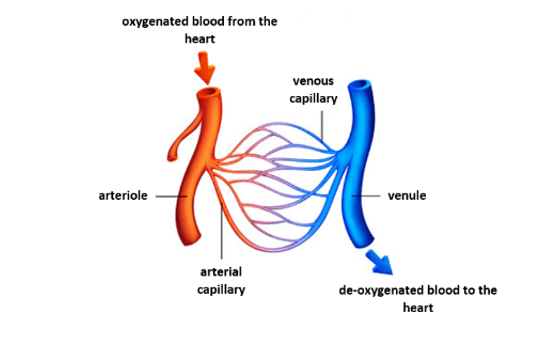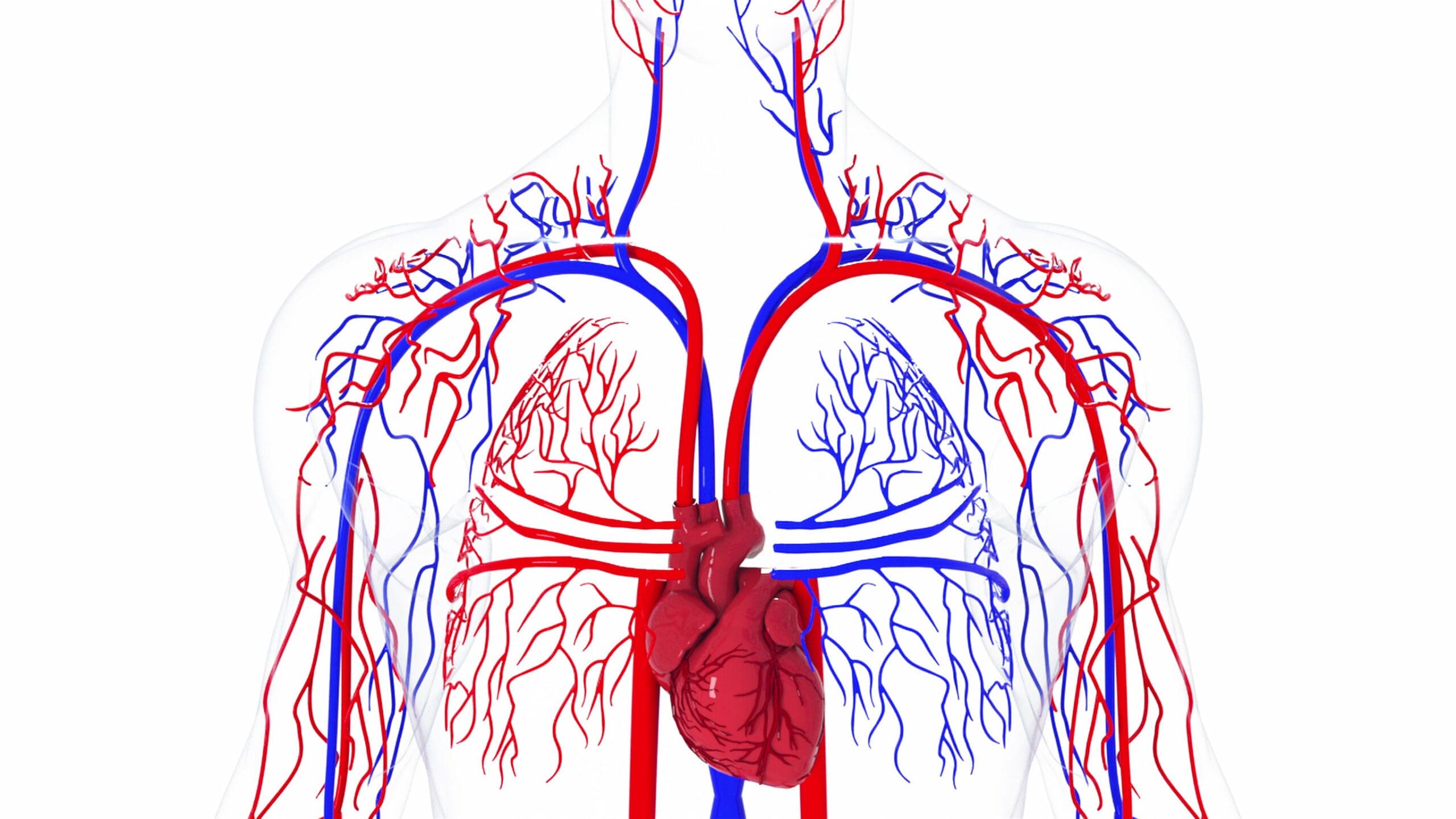Arteries, veins and capillaries are tubular structures that carry blood around the body.
Arteries carry oxygenated blood from the heart to the many organs of the body. This blood is known as arterial blood. Arteries are able to sustain a high amount of pressure which is essential to their functioning. When arterial blood is pumped out by the ventricles of the heart, it puts a lot of pressure on the walls of the arteries. The walls of the arteries have the ability to stretch to accommodate this pressure and the ability to recoil (pull back into shape) to help push the blood along.

Veins carry deoxygenated blood from the organs of the body back towards the heart. The pressure of venous blood is much lower than arterial blood in the arteries, putting very little pressure on the veins. Like the heart, veins also have valves to help move the blood along and to also prevent it from flowing backwards. These valves are known as ‘watch pocket valves’.

Capillaries carry blood through the organs of the body. Capillaries are actually small enough to fit in between cells so that substances can be transferred between the blood in the capillary to the cells of the organ. This is so blood is brought close enough to every cell in the organ and so substances are able to pass through their walls easily.
The following diagram illustrates the connection between arteries, veins and capillaries:




